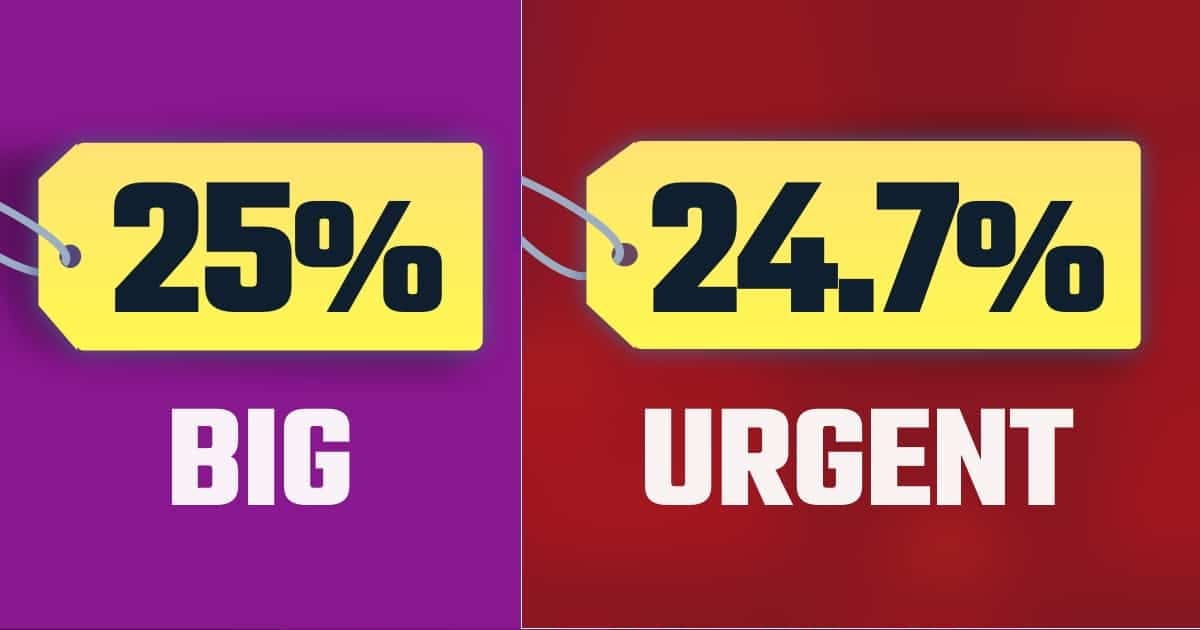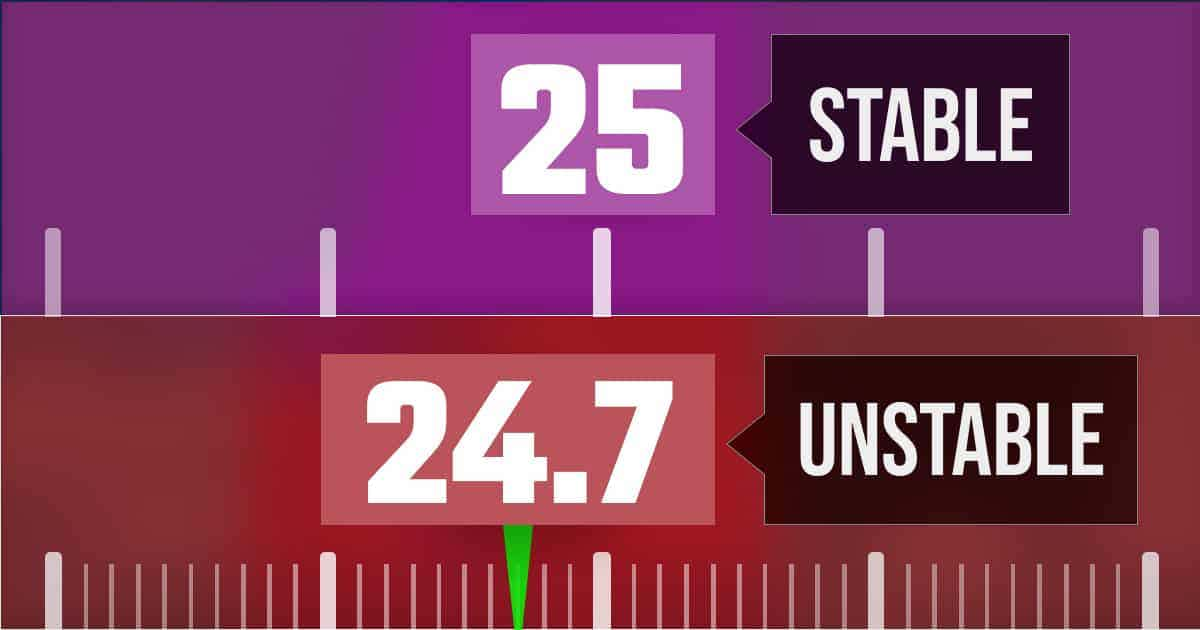Choose a Round or Precise Discount
Round discounts seem big, while precise discounts seem urgent.

Overview
Which discount is better:
- 25% off
- 24.7% off
It depends.
Round numbers typically feel larger (Thomas, Simon, & Kadiyali, 2010).
For example, a drink seemed more energizing with 100mg (vs. 102mg) of caffeine (Pena-Marin & Bhargave, 2016).
So 25% off should perform better, right? Well, not always.
There's another lurking variable: Stability.
You imagine 24.7 on narrow scale in which any movement — even a slight nudge — will change this number.

Subconsciously, it feels like 24.7% can easily change. Perhaps even disappear. Therefore, customers feel motivated to grab this discount while it's still available.
Indeed, customers were motivated by a 6.8% (vs. 7%) discount because they believed it would end sooner (Jha, Biswas, Guha, & Gauri, 2023).
Takeaways:
- Choose an Extreme. A narrow 7.7% or round 10% seem better than 8%.
- Choose Discounts for Segments. Are customers motivated by price? Give 25% off. Urgency? Give 24.7% off.
- Narrow is Better for Long-Term Discounts. If there's no deadline, a narrow discount can imply urgency.
- Pena-Marin, J., & Bhargave, R. (2016). Lasting performance: Round numbers activate associations of stability and increase perceived length of product benefits. Journal of Consumer Psychology, 26(3), 410-416.
- Thomas, M., Simon, D. H., & Kadiyali, V. (2010). The price precision effect: Evidence from laboratory and market data. Marketing Science, 29(1), 175-190.
- Jha, S., Biswas, A., Guha, A., & Gauri, D. (2023) Can rounding up price discounts reduce sales?. Journal of Consumer Psychology.
